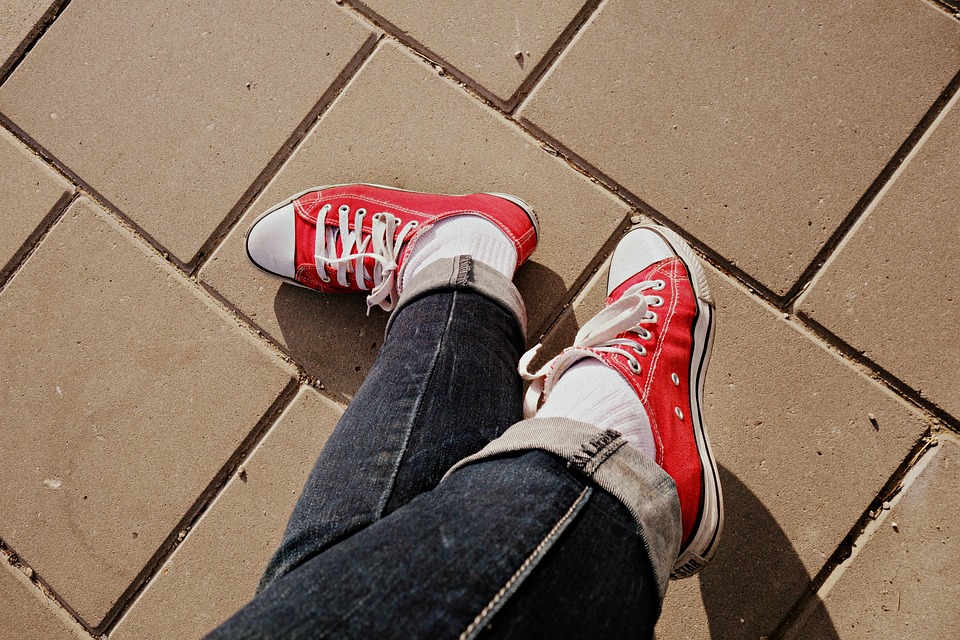Jeans are the world’s most popular style of pants, worn by men, women and children alike. They’ve been around for more than a century, and since that time their popularity has only increased.
There’s a good reason for the growing popularity surrounding jeans, well several reasons actually. Jeans are comfortable, durable, and available in a countless number of styles and colors. You can even find them available in different materials. Granted, denim is the single most commonly used material in the construction of jeans, but many companies have begun selling jeans made using other materials. To learn more about the different materials that jeans are made of, and how these material compare with one another, keep reading.
Denim
Let’s first discuss the most common material used in the construction of jeans: denim. While most people have at least heard of denim before, few know where it comes from or why it’s such a popular choice for jeans. Basically, denim is a ultra-sturdy cotton material that’s made by passing the weft at least two times to create a unique twill. There are several different varieties of denim, however, with the most common being indigo denim. With indigo denim, the warp thread is dyed a dark indigo blue color, which is usually done while the weft thread is still white. This allows for one side of the weft to remain colored (blue), while the other side remains white. If you own a pair of indigo-colored jeans, look inside of waistband and you’ll probably see how it’s a different color than the outside of your jeans. This is because only the outside-facing side of the fabric is dyed indigo, which is the only side that other people see.
Cotton
Here’s where things can get somewhat confusing. While most jeans available on the market are made of 100% denim, some are made of cotton. Being that denim is essentially a type of cotton, however, you may assume the two materials are the same. The truth is that cotton offers some unique properties that aren’t available in denim — the same can be said for denim. Cotton can be dyed in multiple colors; it’s soft; easy to use in textiles and clothing; and highly versatile. Cotton is also one of the world’s oldest crops, with civilizations using it for thousands of years.
100% cotton jeans look and feel much like denim jeans, but most people will agree that they are slightly thinner and softer. This may, or may not, make them more comfortable to wear. At the same time, however, the thinner, less-durable properties of 100% cotton increase the risk of damage, especially when they are washed and dried dozens of times. So if you’re looking for a new pair of jeans that’s going to withstand the hands of time, you may want to avoid cotton and opt for traditional denim instead.
Stretch Jeans
But not all jeans are made of 100% denim. In fact, many varieties are made with a combination of two or more materials, including the all-too-popular stretch jeans. As you may already know, stretch jeans have greater elasticity than their traditional counterpart, allowing the wearer to pull and bend them without causing any damage. This makes stretch jeans a particularly attractive choice for playing sports and participating in other outdoor activities.
While there are always exception to this rule, most stretch jeans contain a minimum of 10% elastic material, such as polyester. That may seem like an insignificant amount, but 10% polyester can make a world of difference in terms of “stretch.” Of course, this shouldn’t come as a surprise to anyone who’s ever owned or worn a pair of stretch jeans. Stretch jeans look like ordinary 100% denim jeans, but they feel softer and more pliable. This makes them an excellent choice for physical activities, as the elastic properties allow you to bend and pull them without causing damage.
Quality Matters
Don’t assume that all 100% denim jeans are made equal. Even if two or more brands of jeans are made of 100% denim, they probably contain subtle nuances in the quality of materials and level of craftsmanship. To the typical consumer, these differences largely go unnoticed. But if you were to compare a pair of high-quality 100% denim jeans with a pair of low-quality 100% denim jeans, you would see why the latter should be should avoided. Jeans that are made with low-quality materials and craftsmanship often contain flaws such as frayed stitching, rough edges and discoloration, all of which can affect their appearance — and not in a good way.
Furthermore, jeans made of 100% high-quality denim are usually softer and more comfortable to wear than their low-quality counterpart. High-quality jeans contain only the highest quality denim, which translates into a more comfortable texture. You can probably save a couple bucks by choosing low-quality denim jeans, but you have to ask yourself if it is really worth the nominal savings (hint: it’s not). When given the option, it’s usually a better choice t0 stick with high-quality denim jeans. They’ll feel softer, more comfortable, last longer, and you can wear for them longer.
So, where can you find high-quality denim jeans for sale? Look no further than our website. Here at MakeYourOwnJeans, you can shop for a wide variety of jeans made using only the highest quality materials and craftsmanship. Whether you’re in the market for 100% denim, stretch or various blended-fabric jeans, we have you covered. And best of all, you don’t have to worry about accidentally choosing the wrong size. We allow for custom sizing on all of your jeans. After choosing your preferred jeans, simply specify your measurements during checkout and we’ll customize them at no additional cost. This takes the burden of trying to find the “perfect fit” off your shoulders. Now that you know a little bit about the different materials from which jeans are made, head over to our store and find the perfect pair for your needs.
To recap, most jeans are made of either denim, cotton, or denim plus an elastic material, the latter of which involves stretch jeans.












